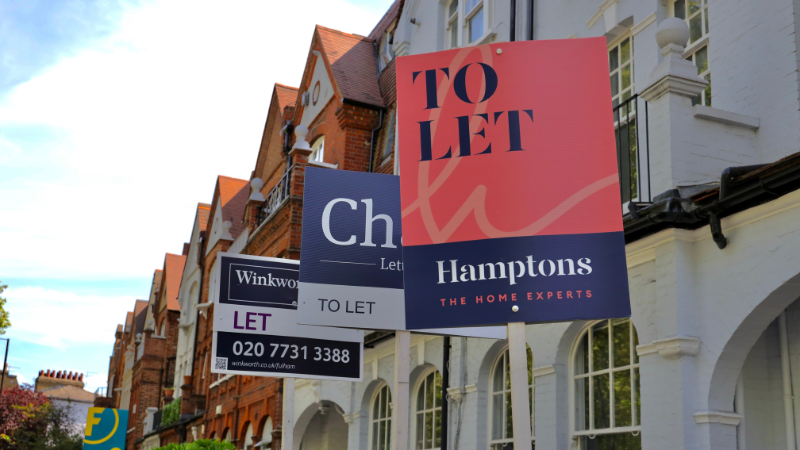Categories
HMO Mortgages – How To Finance An HMO Property

HMOs are still proving to be a lucrative investment today, but if you're looking to secure finance, expect different lending options for an HMO mortgage.
The ROI returns can be impressive, but only a few specialised intermediary-only lenders will fund a foray into the multi-let market.
If you've paid off a mortgage, you may now be looking to reinvest in property. Or perhaps success with residential investment or buy-to-lets (BTL) has prompted you to look towards the possibly doubled returns on HMOs.
You'll first need to understand the market and find the right lender.
Need a HMO Mortgage?
Skip to:
2. Why Become an HMO Landlord?
3. Financing an HMO: Making The Sums Work
4. Arranging Finance for an HMO
What is an HMO Mortgage?
A house in multiple occupation (HMO) is any property with shared facilities such as bathrooms and kitchens which is rented out to three or more people who aren’t part of a single “household” (usually a family).
As a landlord, you don’t need a licence to run a standard HMO with four or fewer occupants. But with all HMOs, there are different mortgage requirements compared with buy-to-let mortgages for whole-property tenancies.
However, what many people refer to as an HMO is actually a Large HMO, which is a rental property with five or more tenants, where the tenants share toilet, bathroom or kitchen facilities. There may also be a defined number of stories in the building.
Local Authority Definitions of HMO and Licensing Requirements
Landlords need an HMO licence to operate a Large HMO, which will be valid for five years. This is why they are sometimes referred to as Licenced HMOs.
This does lend a pejorative meaning to the term “unlicensed HMOs”, suggesting that they are somehow illegal or fly-by-night. So some owners, local authorities or lenders refer to these smaller HMOs as multi-lets, “HMOS Not Required To Be Licensed,” or “non-licensable HMOs”.
Single or joint-tenancy HMOs
Landlords can manage their HMO property by setting up a single "joint and severally liable" agreement, or using an individual contract for each tenant.
JOINT CONTRACTS
- Suitable for a group of students or friends moving in together
- Less administration: one overall agreement, one rent to collect, one deposit to protect
- Tenants are jointly liable for rent, all bills and care of the property
INDIVIDUAL CONTRACTS
- More common for large, low-cost HMOs or HMOs for young professionals
- Each tenant pays his or her own rent separately
- If one tenant fails to pay, the others don’t have to make up the shortfall
- More of an administrative burden: individual rents to be collected and deposits protected.
- The landlord pays council tax and utility bills, though you can include costs in the rent.
Why Become an HMO Landlord?
The figures speak for themselves.
Higher rental income: As a rule of thumb, you might expect to net roughly double the rent. For example: a four-bedroom house let to one family for £800 per month, compared with four individual tenants paying £400 a month each. But you may be charging rent inclusive of bills to attract tenants, and your costs will be considerably higher.
Fewer “impactful voids”: The gap between tenants on a single occupancy property can be at least a month, allowing for repairs, redecorating and viewings, with no rent coming in. With an HMO, the rent from the remaining tenants reduces your losses. And more of your costs may be tax-deductible than with a standard BTL.
Who Are Your Prospective HMO Tenants?
With the cost of buying a home still rising beyond the reach of young buyers the demand for affordable rented accommodation remains very strong. Check local listing sites (Gumtree, Zoopla, Rightmove etc.) to assess the strength of demand from prospective tenants:
Low-cost / affordable housing / housing benefit tenants: Some landlords decide to let their whole properties to local authorities for use as low-cost housing, at a discount but gaining an assured, continuous income.
Students: Can have their rent guaranteed (often by parents) and usually have a natural study-course limit to the length of their tenancy.
Working professionals: Increasing numbers are renting into their late 20s and 30s, looking for higher-spec properties (often with more bathrooms) but usually more stable, less party-lifestyle tenants.
Financing an HMO: Making the Sums Work
HMO properties may be advertised for sale, offering irresistible “100%+ gross yields”. Who wouldn’t want a slice of that? But beware gross yields in the HMO sector: running costs can be considerable, including council tax, insurance, utility bills, management costs, rent arrears and voids.
Realistically, you might expect an ROI of 8-10% a year on an HMO, compared with 4-5% a year for a single-tenancy buy-to-let.
Management Costs for an HMO
In many cases, managing a property yourself can be the most cost-effective option at the outset.
But it's important to consider:
- Is this work you enjoy doing?
- The number of individual tenants, each raising problems to be dealt with.
- How far away the property is (travel time will add up considerably over a year).
- Time and cost of arranging repairs.
If you accurately record the amount of time you spend on property management and attach a cost to your time, you may find that paying a managing agent is cheaper.
Fees Charged By Agencies Will Depend On:
The quality of the property (which determines how many times an agent has to show a room, and how long tenants might stay).
The number of properties they manage for you.
The level of service:
- letting and referencing (generally up to one month’s rent)
- letting, renewing and receiving rent (up to 15% of rent for the whole time a tenant stays in the property)
- full management (up to 20% of rent).
Arranging Finance For an HMO
There are less than a dozen specialist UK lenders who are willing to lend on HMO properties and who understand the profitable yields in relation to the increased risk of having multiple tenants.
They set their own definitions of HMOs, and what they are willing to lend against, which is why you need a broker to put together your application and find the right broker to match.
Lending Criteria For HMOs Include:
- Some lenders will only give mortgage finance on HMOs to experienced landlords, but lack of experience needn’t always be a barrier
- The value of the property
- How much you need to borrow
- Expected rental income
- The number of rooms to be let
- Location
- Whether you will manage the property yourself or use a letting agent (if you live far from the property but intend to manage yourself, that may be problematic)
- Your credit rating
- Whether you are borrowing personally or through a limited company
All the specialist HMO mortgage lenders are broker-only lenders.
An experienced broker such as Clifton Private Finance can package your application to suit the lender who will give you the most favourable terms, which significantly speeds up the application process.
2024 Buy to Let Market Update
- The BTL market has faced challenges over the last 18 months, with landlords finding it difficult to borrow due to stringent stress testing measures.
- Previously, with a stress rate of around 4%, landlords could borrow significantly more. For instance, about a year ago, a basic rate taxpayer could borrow around £309k for a property based on the average UK rent of circa £1,300.
- At 75% Loan to Value, that could buy roughly a £400k property, which you would expect to comfortably provide £1,300 in rental income. So it made sense, and the maths added up.
- However, with stress rates spiking to up to 10.5% this year, the equivalent ’average’ borrowing capacity at this level plummeted to about £165,000, which you wouldn’t expect to fund a property that could generate £1,300 per month in income despite rent rises across the country.
Recent Developments:
- Lately, there's been a slight ease as mainstream lenders are now applying stress tests under a 6% rate, which is a significant relief for landlords.
- This adjustment may stimulate the BTL remortgage market and represents a positive shift for landlords amidst previously harsh market conditions.
- This is coupled with lower buy to let mortgage rates in general, and also the recent news of Rishi Sunak scrapping the EPC requirements landlords.
See the latest market news below.
Where Are the Most Affordable Places in the UK to Buy a Home?
House prices are rising, but not as rapidly as they were before 2022.
In 2024, we did see a modest rise in house prices, but since the budget, this has come down slightly. The Bank of England base rate has dropped, but mortgage deals don’t seem to be moving in response to the Autumn Budget, which has since been widely considered inflationary.
As the housing market begins to recover from the past four years of economic turbulence, there seems to be a case of push and pull between house prices and interest rates restricting affordability.
Limited affordability has caused a visible divide between the UK’s most and least affordable housing. And unfortunately, in more expensive areas, first time buyers aren’t getting to enjoy much of a drop in house prices because the difference is made up by high interest rates and less favourable mortgage deals.
Mortgage rates have come down slightly from their 15-year high, and while the housing market does seem to be on the mend, it’s still not the easiest time to buy property for first-time buyers and investors alike.
For buy to let investors, regulations have gotten stricter since 2022, and high mortgage rates have thinned profit margins, making owning a standard buy to let a trickier affair than a decade ago.
While house prices have dropped slightly due to lack of affordability across London and the rest of the South, this isn't the case in other regions.
But this isn't the case everywhere in the UK. The North of England has seen entirely different purchasing behaviour to the South since the early 2000s. In select areas, particularly Yorkshire, North Lincolnshire and Durham, you can still easily buy a property for under £100,000.
Due to affordable housing and cheaper living costs in these areas, most of Northern England and Scotland have been resistant to the housing slump that the rest of the UK has experienced in response to high mortgage rates. The property market in these regions has remained robust and has seen growth throughout 2024.
There's certainly hope, both for property investors and those looking to get on the housing ladder. If you're looking to invest in a buy to let in 2024, it may be worth looking in affordable areas with a consistent rental demand, such as university towns or areas close to large employers. Property hotspots like these are still reaping generous rental yields while the rest of the country is seeing slow growth.
For first-time buyers, house prices coming down significantly could make it much easier for them to get on the housing ladder, but in many cases, house prices going up is beneficial for those using equity in their homes to make another purchase.
How Much Will HMO Finance Cost You?
HMOs tend to be seen as higher-risk than standard BTLs. Because HMO tenants are unrelated, they tend to move on more quickly, presenting a higher chance of voids or unpaid rent. They’re also less committed to the property as their home, and that can mean they take less responsibility for its care and upkeep. And any problems or damage are harder to identify with a particular tenant.
HMO lenders will be considering the knock-on effects of these higher risks on your ability to pay the mortgage, and this can be reflected in the interest rates.
Get The Best Terms on Your HMO Mortgage
To achieve a good long-term return on your investment, it’s essential that you get the best deal you possibly can on your finance. Contact our HMO Mortgage finance specialists to see how we can help.













